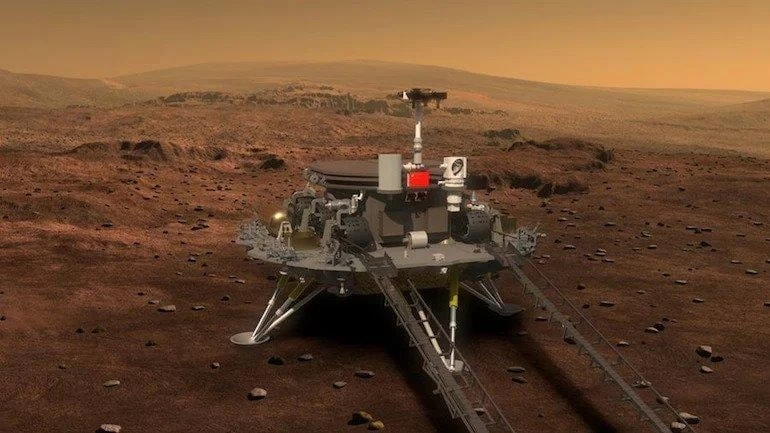Technology
China's 1st Mars rover 'Zhurong' lands on the Red Planet
The China National Space Administration (CNSA) on Saturday stated that the country has landed a spacecraft named 'Zhurong' on Mars for the first time in the latest advance for its space program.

According to official Xinhua News Agency, plans call for a rover to stay in the lander for a few days of diagnostic tests before rolling down a ramp to explore an icy area of Mars known as Utopia Planitia.
The Chinese will join an American rover that arrived at the red planet in February.
China’s first Mars landing follows its launch last month of the main section which will be a permanent space station and a mission that brought back rocks from the moon late last year.
The Asian country has left a footprint on Mars for the first time, an important step for our country’s space exploration.
China has landed on the moon before but landing on Mars is a much more difficult undertaking because it has an extremely thin atmosphere where spacecraft must use heat shields for protection from the searing heat of reentry and both retro-rockets and parachutes to slow enough to prevent a crash landing.
According to the State Administration of Science. Technology and Industry for National Defense, touchdown was at 7:18 a.m. Beijing time (23:18 GMT; 7:18 p.m. EDT).
NASA Associate Administrator Thomas Zurbuchen tweeted his congratulations, saying, “Together with the global science community, I look forward to the important contributions this mission will make to humanity’s understanding of the Red Planet.”
The US had nine successful landings on Mars since 1976.
The Soviet Union landed on the red planet in 1971, but the mission failed after the craft stopped transmitting information soon after touchdown.
Since February, a rover and a tiny helicopter from NASA are exploring Mars.
The US space agency expects the rover to collect its first sample in July for return to Earth in a decade.
-

 Pakistan 2 days ago
Pakistan 2 days agoPetition against Dar’s appointment as Deputy PM dismissed
-

 Pakistan 1 day ago
Pakistan 1 day agoSuo Motu case: CJP seeks response from Vawda, Mustafa
-

 World 23 hours ago
World 23 hours agoRiots among students in Kyrgyzstan
-

 Pakistan 2 days ago
Pakistan 2 days agoTariq Cheema apologises to Zartaj Gul after NA misconduct
-

 Pakistan 1 day ago
Pakistan 1 day agoSummer holidays announced in Punjab
-

 Pakistan 1 day ago
Pakistan 1 day agoNewly elected MNA Ali Pervaiz takes oath
-

 Pakistan 14 hours ago
Pakistan 14 hours agoIn PML-N huddle, Nawaz Sharif deplores past 'injustices'
-

 Business 2 days ago
Business 2 days agoPakistan's forex reserves surge $15mn






























